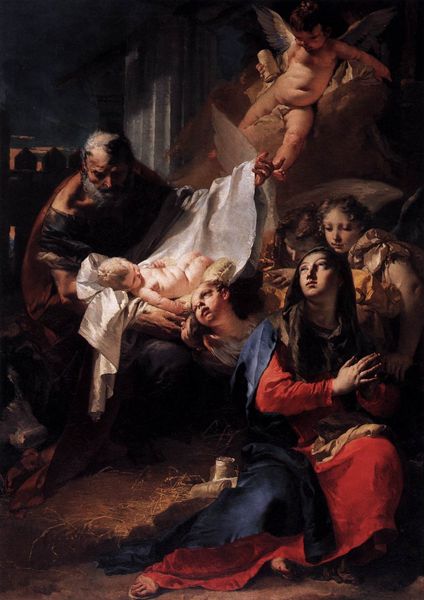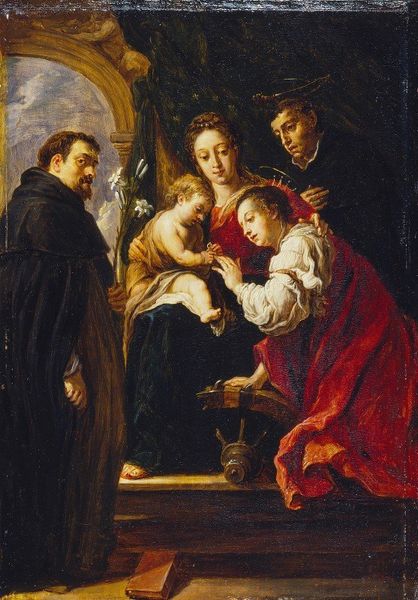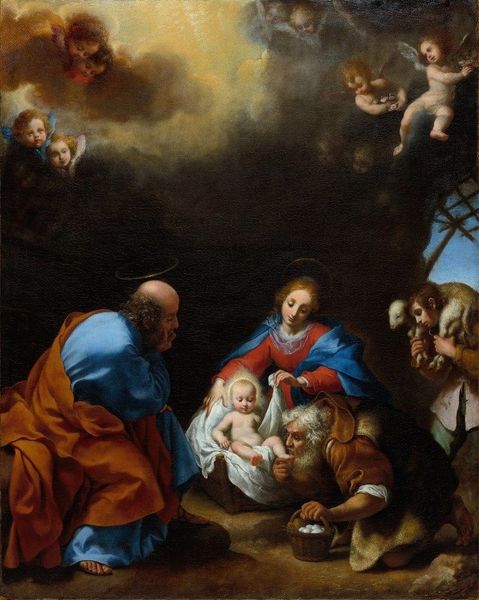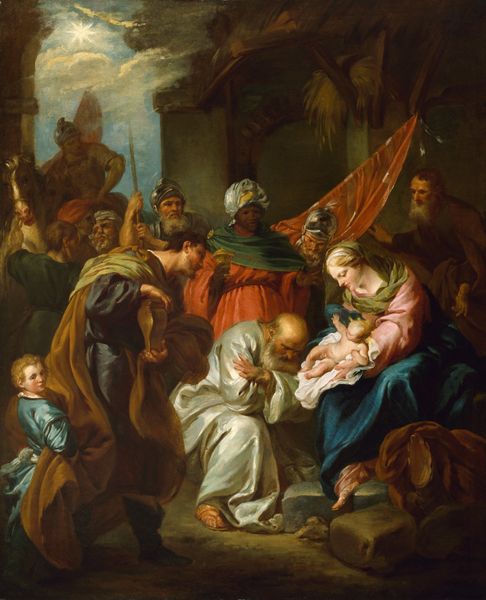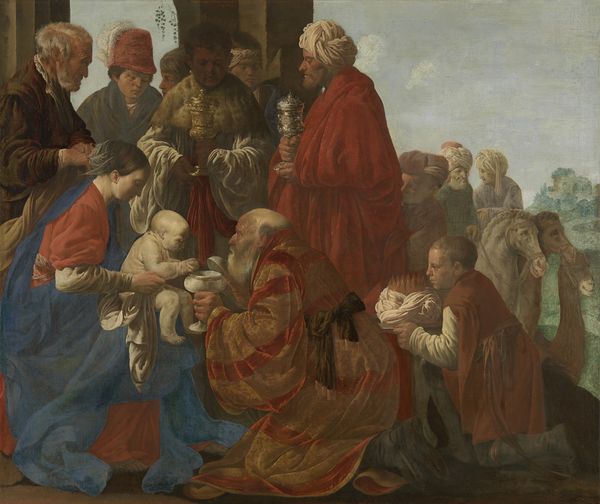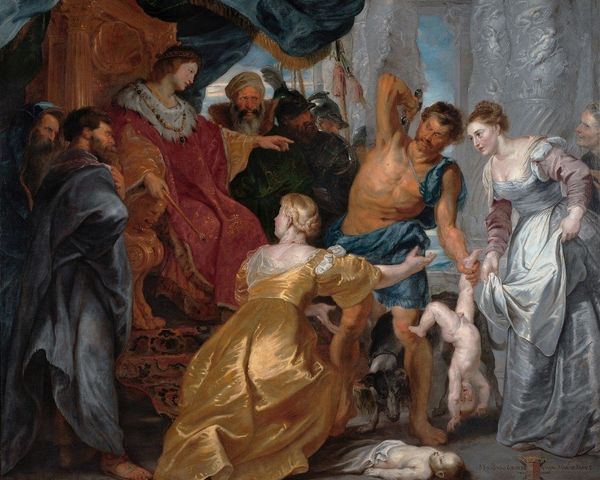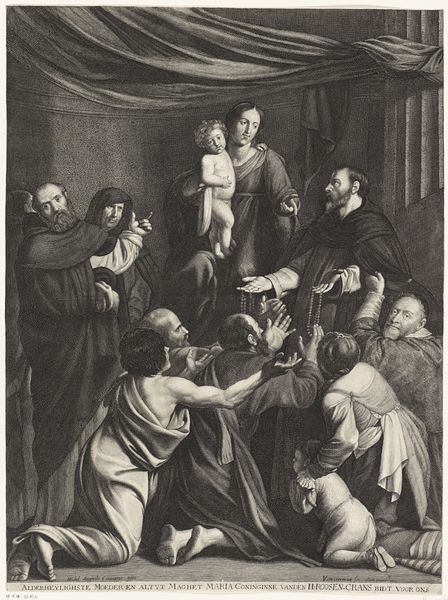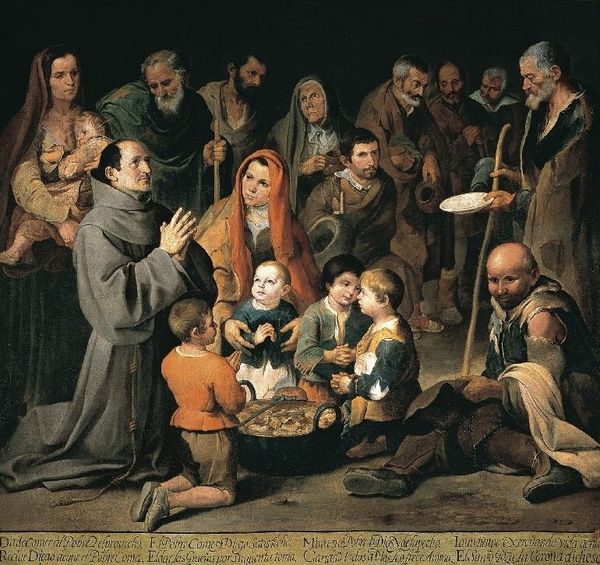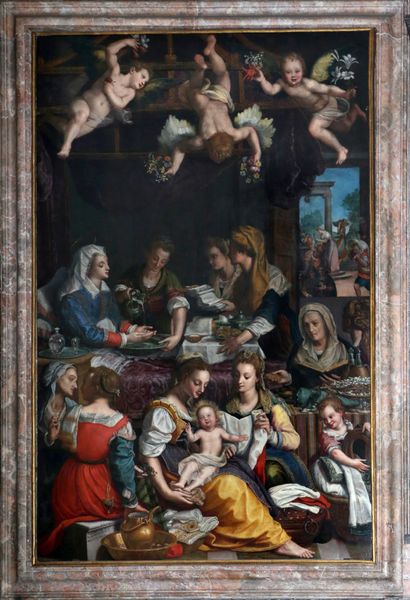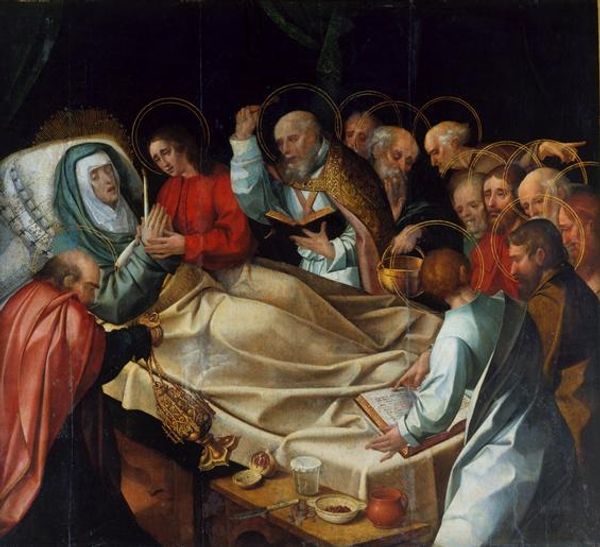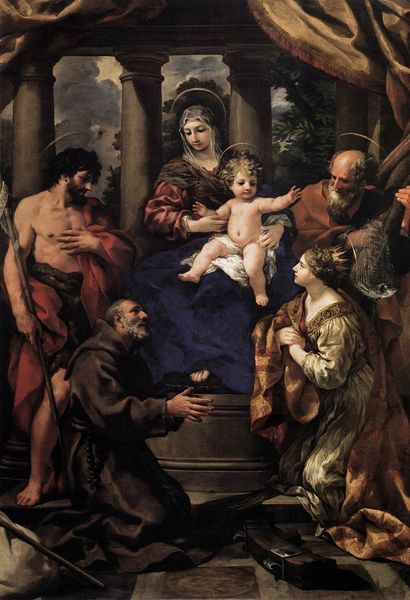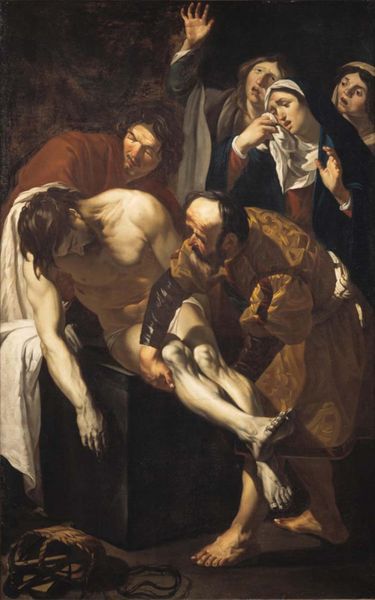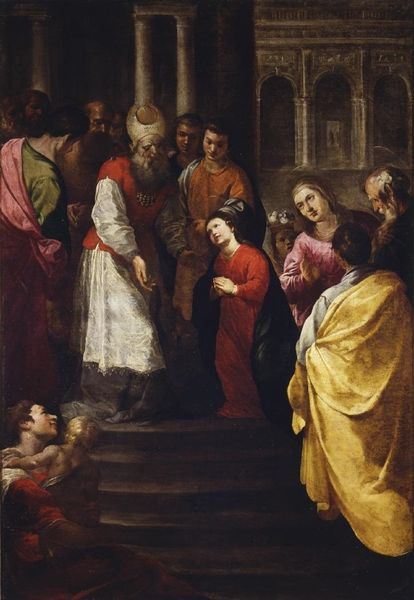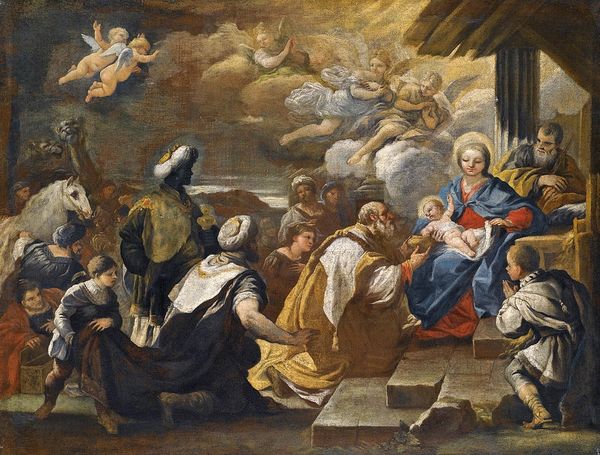
painting, oil-paint
#
portrait
#
baroque
#
painting
#
oil-paint
#
figuration
#
italian-renaissance
Copyright: Public Domain: Artvee
Editor: This is Caravaggio's "Madonna of the Rosary," created between 1605 and 1607, using oil paint. I'm struck by how the figures emerge from the darkness, yet there's a tension between the divine and the almost gritty realism. What strikes you most about this piece? Curator: What immediately stands out is the clear propaganda at work. Commissioned for the Dominican order, note how Madonna is placed above supplicants; even those who could "pay" receive a favor, but humbly! Editor: So, it's not just a religious painting, but a statement about social order and the Church's role? Curator: Precisely. And note the contemporary clothing. By situating this religious scene in his time, Caravaggio is reminding viewers of the Church’s continuous authority and role. Observe the dark background that serves as stage. Do you consider this staging artificial or engaging? Editor: That's clever; though somewhat manipulative. But what about the recipients? Do you see indications of an "ideal" Catholic? Curator: The Church aims for wider reception! These models might be considered social outcasts from the Roman slums - or were they "paid actors" who might make people understand, in their miserable condition, how they could benefit by paying back to the church and following Mary... Editor: I hadn't considered the social context and the deliberate messaging so explicitly before. It's fascinating how art reflects power dynamics. Curator: Indeed. By viewing it with this perspective, it is possible to discover not only history, but also the present's values.
Comments
No comments
Be the first to comment and join the conversation on the ultimate creative platform.
